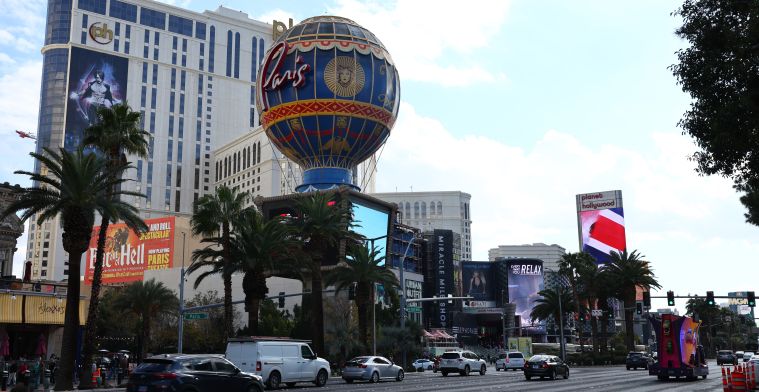F1 News

Question marks around Las Vegas GP: 'That will be an interesting challenge'
No Grand Prix is talked about and written about as much beforehand as the GP through the streets of Las Vegas: it is, for instance, about the expensive entry tickets and the major works in the city (which even resulted in the loss of a worker's life). Much less about when the race is held: on a Saturday night in November, when it is often quite cold in the state of Nevada.
The hype surrounding the Grand Prix across the legendary Strip is huge. Formula 1 cars will soon race through the streets of the gambling city, where earlier in the day the many tourists were still making their way to the very expensive resorts. Partly for the benefit of European TV viewers, it was decided at the time that the race would be finished on a Saturday night, so that in Europe it would not be in the middle of the night. In that case, it could make quite a difference in terms of viewer figures.
From really hot to pretty cold
As we know, Las Vegas is located in the desert. In summers, Las Vegas is scorching hot. In the month of July, the average maximum temperature is even 40 degrees Celsius. For a Formula One race, that is anything but ideal. But in the autumn and winter months, the average temperature drops considerably. During the Grand Prix period, the temperature is between sixteen and five degrees. In the evening hours - the race starts at 10pm local time - it averages around seven degrees Celsius.
The Las Vegas circuit is unknown to the F1 teams, so the factories are currently busy researching how best to tune the cars for this particular track. In the simulators, many rides have already been driven over through the gambling paradise for this purpose. "The temperatures are going to be probably one of the biggest challenges," says Jonathan Eddolls of AlphaTauri.
"I think we're expecting circuit 10 degrees of ambient, so very much like the winter test. But then, you know, in many years, we've done winter tests in Barcelona at those sorts of temperatures. So it's not going to be completely new to us. But definitely, it's quite a step away in terms of where we're going to be operating the car and tyres to what we're used to in a normal season," said the Italian team's head of trackside engineering.
Mercedes is already thinking ahead
Mercedes is also taking cold conditions into account. "Yes, I think it'll just depend on exactly how cold it is," said Andrew Shovlin of the German team. "Because if the track is down in single figures, that's often a region where you go winter testing, you do a run, it's very difficult for the tyres to either get them switched on, or there may be graining and things. And then sometimes you just wait until it warms up a bit."
"So actually going to have to sort of race and qualify in those conditions, it will be interesting, but you just try and identify the risks with the new circuit, work out what your contingencies will be, whether you need any sort of specific car spec to deal with that, and we’re going through those at the moment. But as I said, if it's at the very cold end of predictions, it's difficult to know how they are going to work," said the trackside engineering director.
Haas prefers it cold
For the Haas F1 team, the Las Vegas Grand Prix is one of three home races. The Americans are keen to perform well in front of their own crowd, but Ayao Komatsu (technical director) realises that it is precisely the cold that could be an additional obstacle: "Yeah, I think it'll be a big challenge for us, especially our team, with the tools we’ve got in terms of a pre-event simulation, more limited, let's say, than Mercedes, so we’re going to have a big challenge on our hands."
Still, Komatsu says: "But yeah, still a very different temperature window. So we’ve got to get the tyres to work, but if I had to choose hot or cold, I would choose cold conditions at the minute. So hopefully you can get it to work and it’s a challenge we’re looking forward to."



















































